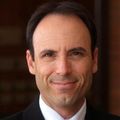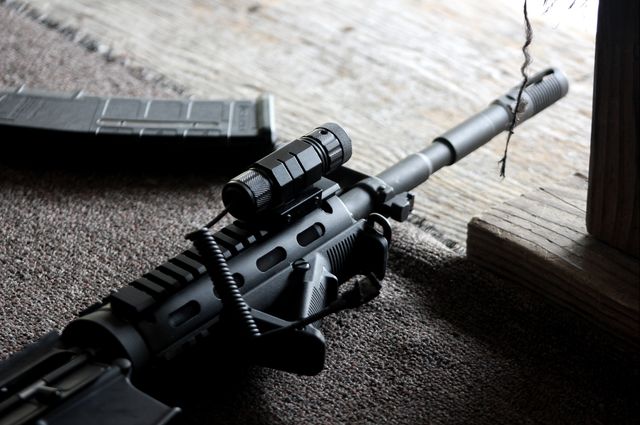
Adam Winkler is a professor of law at UCLA and the author of “Gunfight: The Battle Over the Right to Bear Arms in America.” This column originally appeared in the Los Angeles Times.
After a horrific tragedy like the Las Vegas massacre, Americans argue about whether it’s the right time to talk about our gun violence problem. The real issue is not when to discuss it, but how. In all the words we’ve heard since Sunday night, this much is clear: We don’t talk about guns and gun violence the right way.
We ask, for example, what can be done to stop mass shootings from happening again. But we can’t eliminate shootings any more than we can end drug use or drunk driving. The proper question is what can be done to lower the number of incidents and reduce the harm from each one.
And then there are the numbers: Las Vegas is a painful illustration of the way we focus too intently on gun deaths. It’s the worst modern U.S. mass shooting because there were 58 deaths, in contrast to the previous high of 49 in the Pulse nightclub massacre in Orlando, Fla. Yet there were so many other victims in Las Vegas.
According to police, 489 people were wounded, most by gunshot. That’s more than eight times the number of fatalities. The wounded will live, but in many cases their lives will be forever altered by devastating injuries, lengthy recoveries, emotional problems and medical debts.
Thanks to the spread of trauma centers and advances in medical care, a higher percentage of victims of gunshot wounds survive than ever before. More than 33,000 people die in gun violence in the U.S. each year; 70,000 suffer from nonfatal gun injuries. The toll of gun violence is 100,000-plus victims a year.
And even that figure is too low. The ripple effect of all the carnage, from the wounded as well as the dead, extends to victims’ spouses, family members, close friends and coworkers. The costs — the waste inherent in the violence — cannot be fully quantified, but studies indicate that firearms injuries, fatal and nonfatal combined, drain the economy of at least $48 billion annually in lost work and medical expenses.
Another error we make is devoting inordinate attention to mass shootings. To be sure, an attack on thousands of people in one of the most frequented tourist destinations in the country warrants the extensive coverage devoted to the Las Vegas shooting. As psychologists have pointed out, random killings in a public space — something we can all imagine happening to us — rivets our attention.
Mass shootings are a particularly hard problem to stop in a country with 320 million guns. In the U.S., most mass shooters, including Stephen Paddock, easily pass background checks and obtain their guns legally. Yet mass shootings occur even in countries with much more restrictive gun laws than the U.S. — Norway and France, for example. Australia’s gun control laws are often cited as a model, but there are still millions of guns in that country — as many as prior to the reforms — that a would-be mass shooter could use.
Instead of focusing on mass killings, we need to address everyday gun violence. That is where laws can work. Lowering the daily toll of gun violence — the criminal misuse of firearms, accidents and suicides — is within our reach, through universal background checks, safe storage rules and more vigorous prosecution of gun trafficking. The gains could be huge: Nearly 275 people a day suffer “normal” gun violence. The weekly total — around 1,925 people — is more than triple the number of wounded and dead in Las Vegas.
And can we talk about suicide? Among gun casualties, 60 percent come from suicide. We spend hours discussing what we can to do prevent mass shootings, which account for only a fraction of gun victims, and almost no time on preventing the most common way guns are misused.
Here’s another mistake we make in the gun debate: Too often we hear — and believe — that the “right to bear arms” prevents us from enacting new, better gun safety laws. The National Rifle Assn. has convinced us that the 2nd Amendment outlaws even popular measures like universal background checks or a no-buy list for suspected terrorists. Some gun opponents unwittingly contribute to this misunderstanding when they argue that we should repeal the 2nd Amendment.
Although the Supreme Court in 2008 held in District of Columbia vs. Heller that individuals have a right to have guns, the justices also made clear that most gun laws are nonetheless constitutional. Indeed, since Heller was decided, federal courts have ruled in favor of gun control laws in approximately 95 percent of 2nd Amendment cases.
It’s the NRA, not the Constitution, that stands in the way of many of these laws. Where the gun group is weaker — in California, New York and Massachusetts — gun laws are much tougher. You might be nodding in agreement, but again, perhaps for the wrong reason. It’s easy to cast the gun rights group as a shill for the gun industry swaying elected officials with abundant campaign contributions. Although the NRA wouldn't be the force it is without campaign money, the real basis of its influence is its ability to command influential blocs of single-issue, pro-gun voters. Lawmakers kowtow not for dollar contributions but for fear the NRA will endorse their opponents in the next election cycle, and those dedicated voters will listen.
And this is the final error of today’s gun debate. We misunderstand our own control over gun violence. The lack of effective gun control is not due to a few words in the Bill of Rights or the campaign cash of an interest group. America’s gun laws are a function of the democratic process, and the electoral strength of those who oppose restrictive measures despite majorities that favor them. Obsessing over shooters like the Las Vegas killer won’t make us much safer. Grasping the real dimensions of everyday gun violence — and acting accordingly to try to stop it — will.
Editor’s note: When this op-ed was originally published the number of deaths was 58, since then the death toll has risen to 59.





